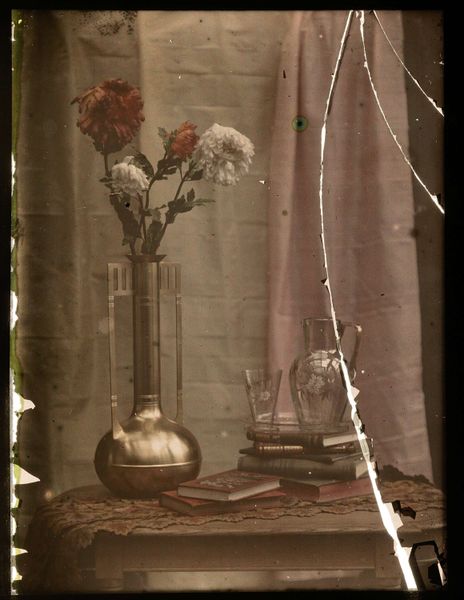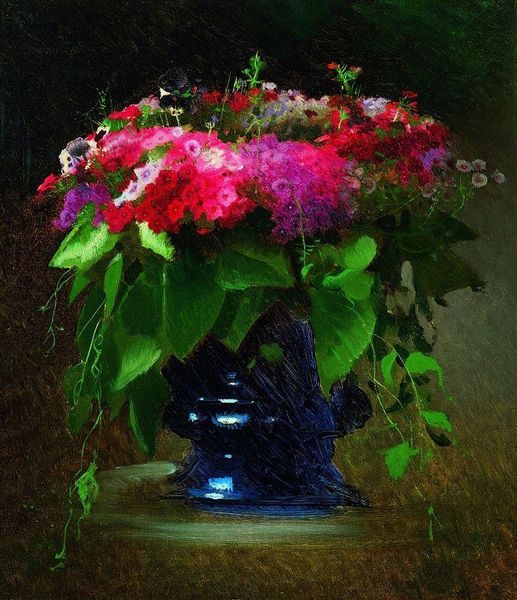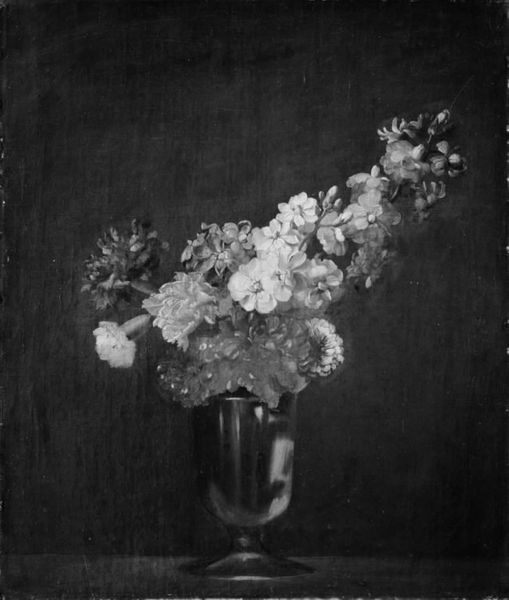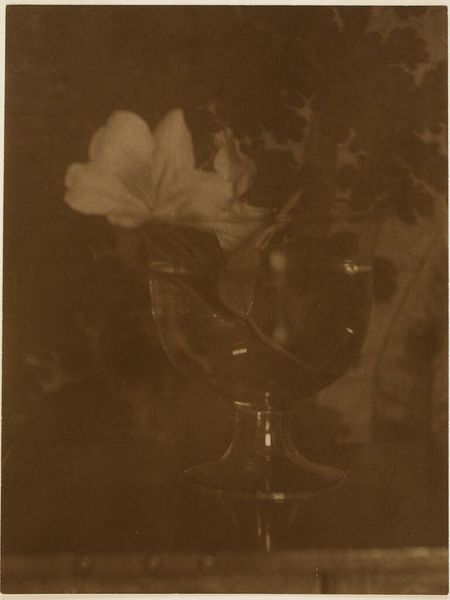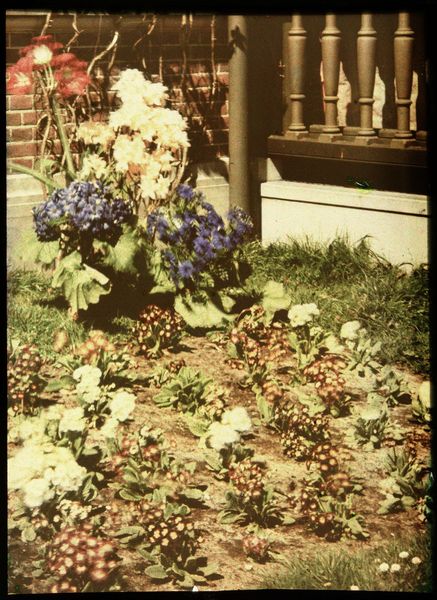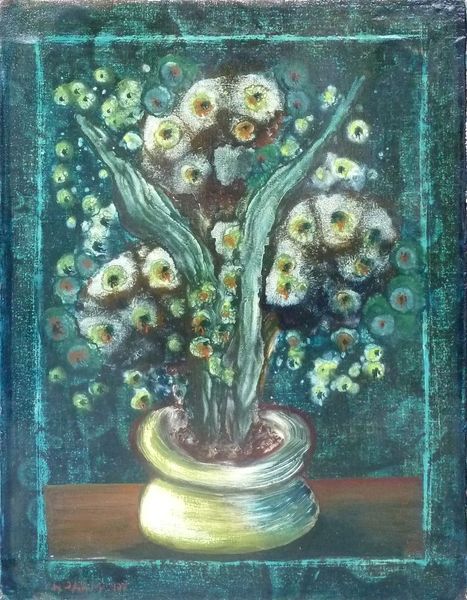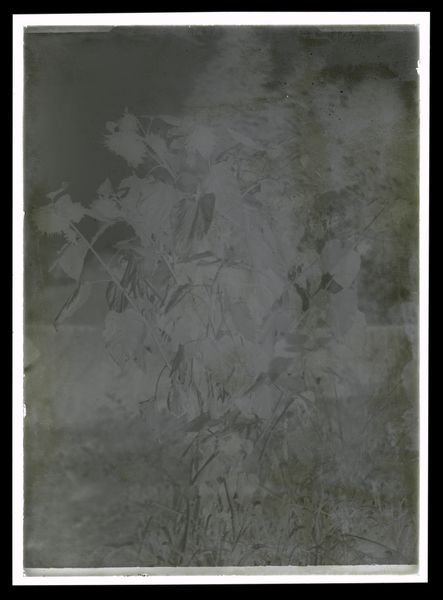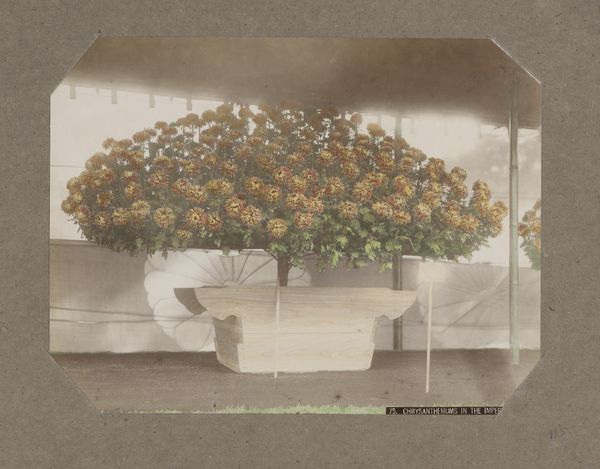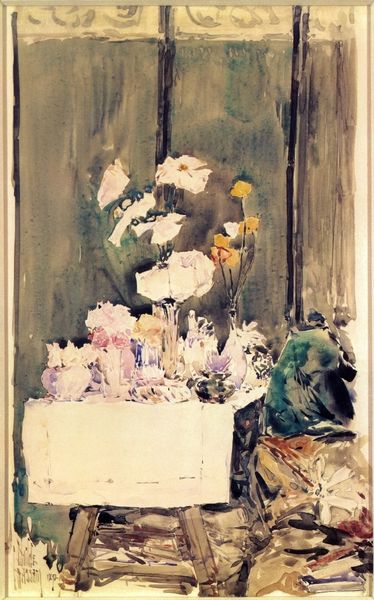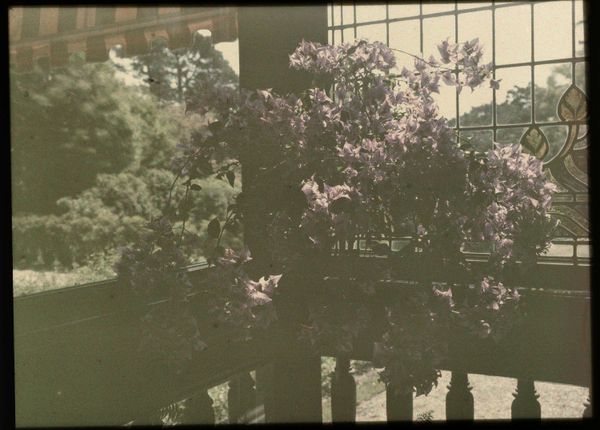
Dimensions: height 109 mm, width 79 mm
Copyright: Rijks Museum: Open Domain
Editor: So this is *Bloemen (asters) op een vaas*, taken by C.W. Immink sometime between 1907 and 1935. It's a photograph of flowers in a vase. What strikes me is how painterly it feels, almost like an impressionist still life, yet it is clearly a photograph. What do you see in this piece? Curator: Indeed! I am captivated by this interplay between mediums. We often forget that photography, particularly in its early days, was deeply influenced by painting. This photograph, seemingly simple, begs the question: what does it mean to represent "nature" through a mechanical lens versus a painter’s hand? Editor: That's interesting, I had not considered photography as another way to represent "nature." Curator: Precisely. And consider the historical context. Early 20th century: the burgeoning middle class has access to art production for the first time, creating new spaces for consumption and aesthetic awareness. Who has access to these practices is very important, and will create an enduring divide. Does this photo, with its domestic subject matter, reflect that social shift? Editor: That's fascinating. The ordinariness of flowers arranged in a simple vase almost conceals these more complex issues of access and representation. It suggests a kind of intimacy, doesn’t it? Curator: Exactly. Intimacy, domesticity—spaces historically gendered as feminine. How might this photograph, therefore, participate in the construction or perhaps even subversion of such gendered spaces? Think about the role of women in arts and the limited options they faced. How does Immink challenge those? Is there agency in capturing such an image? Editor: I see it now! Thank you, it’s much more thought-provoking than just pretty flowers. It certainly sheds new light on my interpretation of the piece. Curator: Absolutely. It shows how art is never separate from broader social and historical conditions, and understanding these dynamics is a must to truly interpreting its depth.
Comments
No comments
Be the first to comment and join the conversation on the ultimate creative platform.


